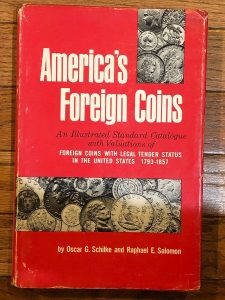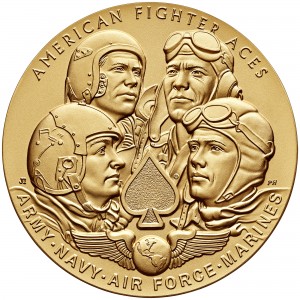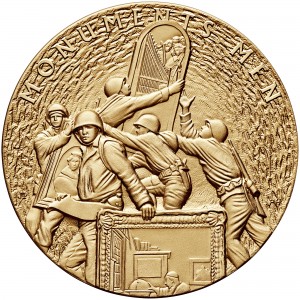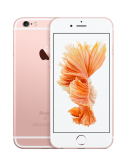ANA Library Opens Again
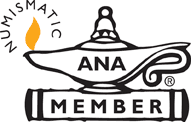 A year after the pandemic shut everything down, the ANA Library is back! ANA members can check out books from the library and have them shipped.
A year after the pandemic shut everything down, the ANA Library is back! ANA members can check out books from the library and have them shipped.
The ANA announced the library’s opening yesterday in their monthly Money Mail. After reading it, I found my notes with the four books I want to consult and submitted a request.
The ANA Library might be the most underused benefit of being an ANA member. The library contains many hard-to-find and expensive books that might be useful for a short time. All you do is pay for the shipping in both directions, and the entire world of numismatics is delivered to your mailbox.
Books are an excellent resource for information that is no longer in the mainstream. For example, I developed an interest in foreign coins used as legal tender in the United States and the foreign coins struck by the U.S. Mint. There are a few resources, and they are challenging to find. None of the books are available in digital format.
Since the start of the pandemic, I have been on a book buying spree. References books that I wanted to borrow from the ANA were purchased and added to my growing library. The expansion of my numismatic library has forced me to downsize my old techie books. Numismatic books are more fun.Having a ready library of references helps satisfy my curiosity. A few of the books have references to scanned books and articles found online at both the Newman Numismatic Portal and the Government Printing Office. These resources help in providing background to my reading.
Having access to the digitized editions of the Numismatist also helps. ANA members can access the complete library of the Numismatist via their website or a smartphone app. It has been common to have the app open on my iPad while staring into the computer screen reading another resource.
Since all of the Numismatists are available online, I will be finding new homes for the paper copies taking up valuable shelf space.
Beware of Frighteningly Deceptive Counterfeits
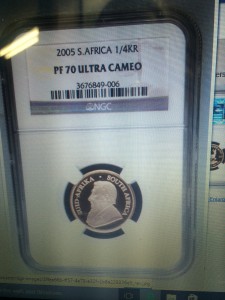
The counterfeit quarter-ounce Krugerrand in a counterfeit NGC holder that was purchased in Fullerton, California.
The biggest threat to the numismatics industry is not the lack of participation by younger people, women, or people of color, all of which are problems, the threat that counterfeits pose will drive away potential collector and investors. Anyone that collects scarce or rare coins should be very concerned about counterfeits.
Industry heavyweight Dwight Manley issued a statement after his company was fooled by a counterfeit Krugerrand in a counterfeit third-party grading service holder. Here is the statement:
Prominent rare coin dealer and collector Dwight Manley, owner of Fullerton Coins & Stamps in Fullerton, California and Managing Partner of the California Gold Marketing Group, who assisted a quarter-century ago in breaking up a counterfeit coin and counterfeit holder scheme, has issued the following statement.
“A frighteningly deceptive counterfeit has been encountered, and the world needs to be told about it. We recently realized that a 2005-dated quarter-ounce South African Krugerrand labeled NGC Proof 70 is not only a counterfeit coin, it is housed in a counterfeit Numismatic Guaranty Corporation holder that has the same certification number on the label as a genuine 2005 PF 70 one-quarter ounce Krugerrand listed in the NGC data base.”
“The fake was purchased on October 23, 2015 by a knowledgeable employee of Fullerton Coins & Stamps over the counter from a semi-regular customer. Before making the purchase, the employee checked the NGC website to see if the certification number and coin description matched. They did: cert number 3676849-006.”
“I recently examined the coin, and it just didn’t look quite right. I did a side-by-side, inch-by-inch comparison between the encapsulated coin the store purchased and the obverse and reverse photos on the NGC website. The reproduction of the NGC hologram on the fake is almost dead on the same; however, there is one distinct difference between fake and genuine on the left side of the front insert label. On the fake coin, the circle in the NGC logo (an encircled balance scale) goes almost entirely around the P in the grade PF 70. On the genuine coin’s label, the P is outside the logo circle.”
“An amazing amount of effort obviously went into creating a fake coin and a fake holder with a cert number and description that match a genuine coin. I’ve notified NGC, but in the meantime, I caution collectors and dealers to watch out for any similar, deceitful and dangerous counterfeits.”
In the mean time, in Mexico…
UPDATE: English version of the video added below.
While looking at my timeline on Twitter, I found a tweet from what could be classified as the public relations office of Banco de México (Bank of Mexico), the Mexican central bank. Although my Spanish is barely above what I remembered from two semesters as an undergrad, I know enough that if I had any question to call up Google Translate for a fairly good translation.
¿Sabes cómo se fabrican los billetes en México? https://t.co/rCbrl50TXJ pic.twitter.com/Y3iTpgE77y
— EmisiónBanxico (@EmisionBanxico) November 5, 2015
This one was pretty easy and I understood it before asking for help. It asks “Do you know how banknotes are made in Mexico?” Looking at the question, I shrugged and thought they were made the same way they were made in the United States. While that is pretty much the case, seeing the process from another country’s perspective, especially a neighbor, could be interesting.
While the tweet was easy, the video is all in Spanish which really tested my translation skills. After I figured out that the first part talked about the early history of Mexican money and how it was initially produced by the American Banknote Company, I stopped thinking about the translation and just watched. I picked up a few things in context and liked the presentation. I like the scenes where they test the durability of the banknotes. I do not know if the Bureau of Engraving and Printing does that, but it is an interesting concept!
See the video for yourself:
UPDATE
Thanks to Coin Collectors Blog reader Rombat Stephan, he found that the Bank of Mexico published an English version of the video on YouTube:
Thank you Rombat Stephan!
On the 11th day of the 11th month…
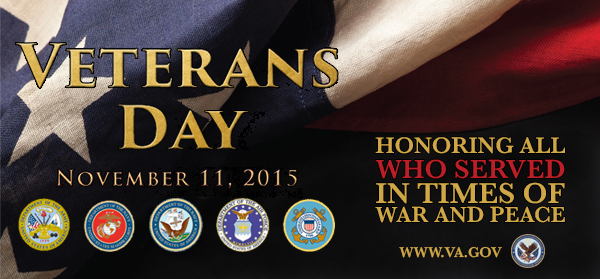
Our veterans left everything they knew and loved and served with exemplary dedication and courage so we could all know a safer America and a more just world. They have been tested in ways the rest of us may never fully understand, and it is our duty to fulfill our sacred obligation to our veterans and their families. On Veterans Day, and every day, let us show them the extraordinary gratitude they so rightly deserve, and let us recommit to pledging our full support for them in all they do.
signed by President Barack Obama, Nov. 5, 2015
Medal images courtesy of the U.S. Mint
Summary of October 2015 coin-related legislation
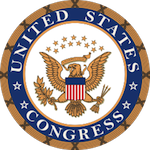 Those who follow politics has watched the machinations that the House of Representatives went through before picking Rep. Paul Ryan (R-WI) as the 54th Speaker of the House of Representatives. During that time, not much else happened outside of the requisite budget battles. But there was one bill introduced that may be of interest:
Those who follow politics has watched the machinations that the House of Representatives went through before picking Rep. Paul Ryan (R-WI) as the 54th Speaker of the House of Representatives. During that time, not much else happened outside of the requisite budget battles. But there was one bill introduced that may be of interest:
S. 2185: Breast Cancer Awareness Commemorative Coin Act
- 2018 Commemorative program
- 50,000 $5 “pink gold” coins with $35 surcharge
- 400,000 silver $1 coins with $10 surcharge
- 750,000 clad half-dollars with $5 surcharge
- Surcharge paid to Breast Cancer Research Foundation for the purpose of furthering breast cancer research
Track this bill at https://www.govtrack.us/congress/bills/114/s2185
If you think that this bill looks very much like H.R. 2722, you are a very perceptive person. The only difference between this bill and H.R. 2722 is the specification to use “pink gold.” Pink gold is actually “rose gold,” which has a pinkish hue. For the record, Apple’s new iPhone 6S comes in rose gold that looks more pink that “rose.”
Speaking of budget bills, one of those bills, S. 2132, has been reported out of committee and waiting for a Senate vote. What is significant about the bill is that it outlines how much money the U.S. Mint can withdraw from the Public Enterprise Fund, the account where the seigniorage from all coin sales is deposited. The bill states:
United States Mint – United States Mint Public Enterprise Fund
Pursuant to section 5136 of title 31, United States Code, the United States Mint is provided funding through the United States Mint Public Enterprise Fund for costs associated with the production of circulating coins, numismatic coins, and protective services, including both operating expenses and capital investments: Provided, That the aggregate amount of new liabilities and obligations incurred during fiscal year 2016 under such section 5136 for circulating coinage and protective service capital investments of the United States Mint shall not exceed $20,000,000.
A Perfect 10!
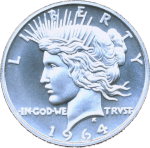 Sometime in 2005 I began to search the Internet for information about coins. The two major publications, Coin World and Numismatic News, were not quite fully engaged online at that time. There were other online services but there was not something that would be the voice of a collector. Chat boards are nice but they are fractured. I wanted to have a conversation with the community.
Sometime in 2005 I began to search the Internet for information about coins. The two major publications, Coin World and Numismatic News, were not quite fully engaged online at that time. There were other online services but there was not something that would be the voice of a collector. Chat boards are nice but they are fractured. I wanted to have a conversation with the community.
Although I have a technical background, I did not know how to create and run a blog. After doing some research I discovered Blogger, Google’s blogging platform. After playing with the administration and learning how to create a blog post, I wrote my first post on October 29, 2005.
In my first post, I said that the coins I like include “Adolph A. Weinman’s Walking Liberty Half-Dollar and Liberty Head “Mercury” Dime, James Earl Fraser’s Buffalo Nickel, Augustus Saint-Gaudens’ $20 Double Eagle, and Bela Lyon Pratt $5 Half-Eagle.” Not much has changed except for my interest in exonumia, especially those pieces with ties to New York City, and the addition of Canadian coins to my collection
The blog has changed, or I would like to think it has evolved over the years. The biggest change was moving away from Blogger to my own domain. As part of the move I decided to create a logo using the allegedly non-existent 1964-D Peace Dollar, and I now participate social media specifically Twitter and Pinterest. What has not changed is the amazed and humbling experience I feel when I look at the server logs to see that more than 1,000 people read my posts—even with the recent slowdown in writing.
Stay tune… more to come!
